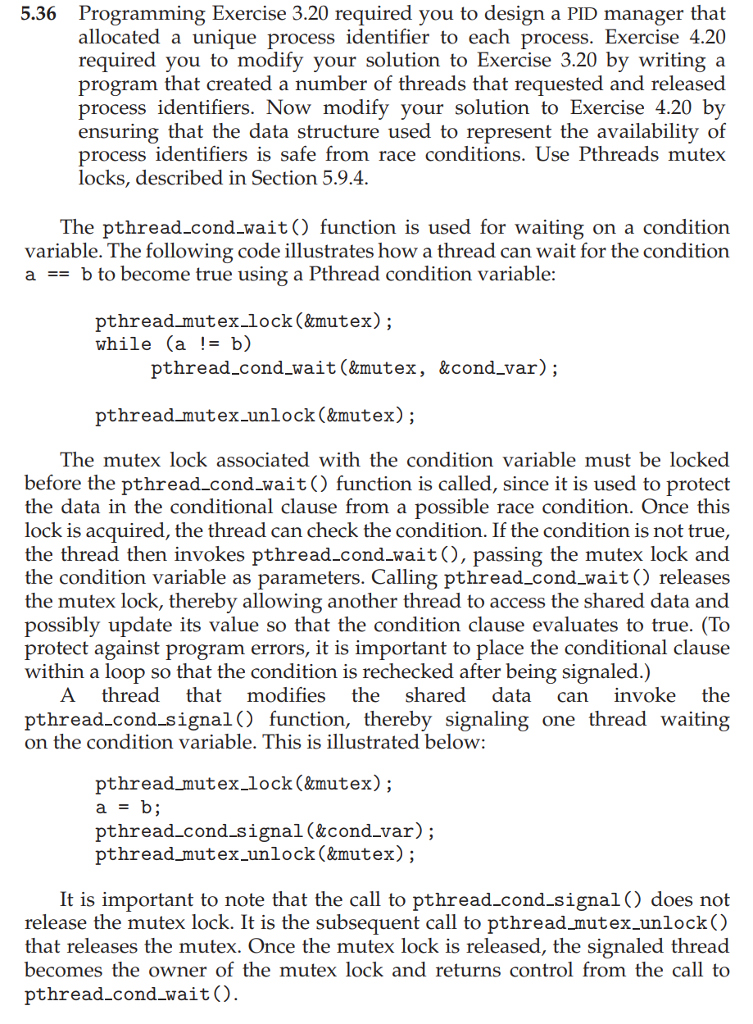
5.36 Programming Exercise 3.20 required you to design a PID manager that allocated a unique process identifier to each process. Exercise 4.20 required vou to modify vour solutionto Exercise 3.20 by writing a program that created a number of threads that requested and released process identifiers. Now modify your solution to Exercise 4.20 by ensuring that the data structure used to represent the availability of process identifiers is safe from race conditions. Use Pthreads mutex locks, described in Section 5.9.4 The pthread cond-wait) function is used for waiting on a condition variable. The following code illustrates how a thread can wait for the conditionn ab to become true using a Pthread condition variable: pthread mutex.lock(&mutex); while (a != b) pthread_cond_wait (&mutex, &cond var); pthread mutex.unlock (&mutex); The mutex lock associated with the condition variable must be locked before the pthread.cond wait() function is called, since it is used to protect the data in the conditional clause from a possible race condition. Once this lock is acquired, the thread can check the condition. If the condition is not true, the thread then invokes pthread-cond waitO, passing the mutex lock and the condition variable as parameters. Calling pthread cond wait() releases the mutex lock, thereby allowing another thread to access the shared data and possibly update its value so that the condition clause evaluates to true. (To protect against program errors, it is important to place the conditional clause within a loop so that the condition is rechecked after being signaled.) A thread that modifies the shared data can invoke the pthread.cond signal() function, thereby signaling one thread waiting on the condition variable. This is illustrated below: pthread_mutex_lock (&mutex); pthread-cond-signal (&cond-var); pthread_mutex.unlock (&mutex); It is important to note that the call to pthread-cond-signal() does not release the mutex lock. It is the subsequent call to pthread mutex.unlock) that releases the mutex. Once the mutex lock is released, the signaled thread becomes theowner of the mutex lock and returns control fromthe call to pthread_cond wait(







